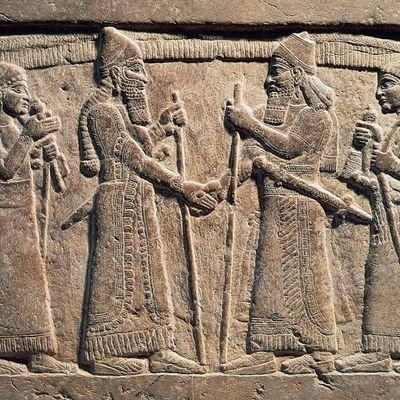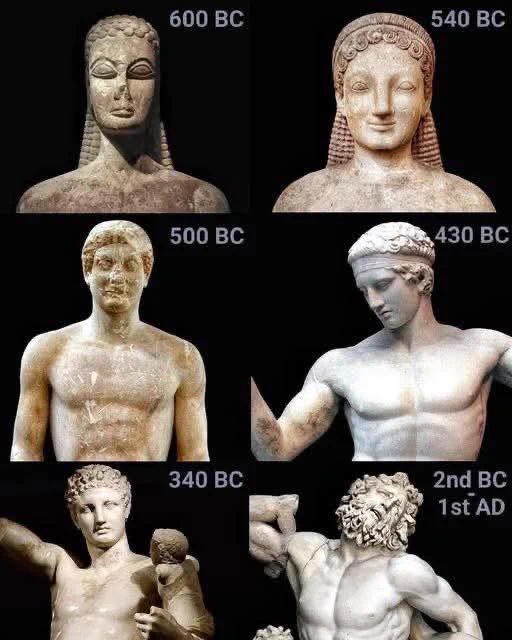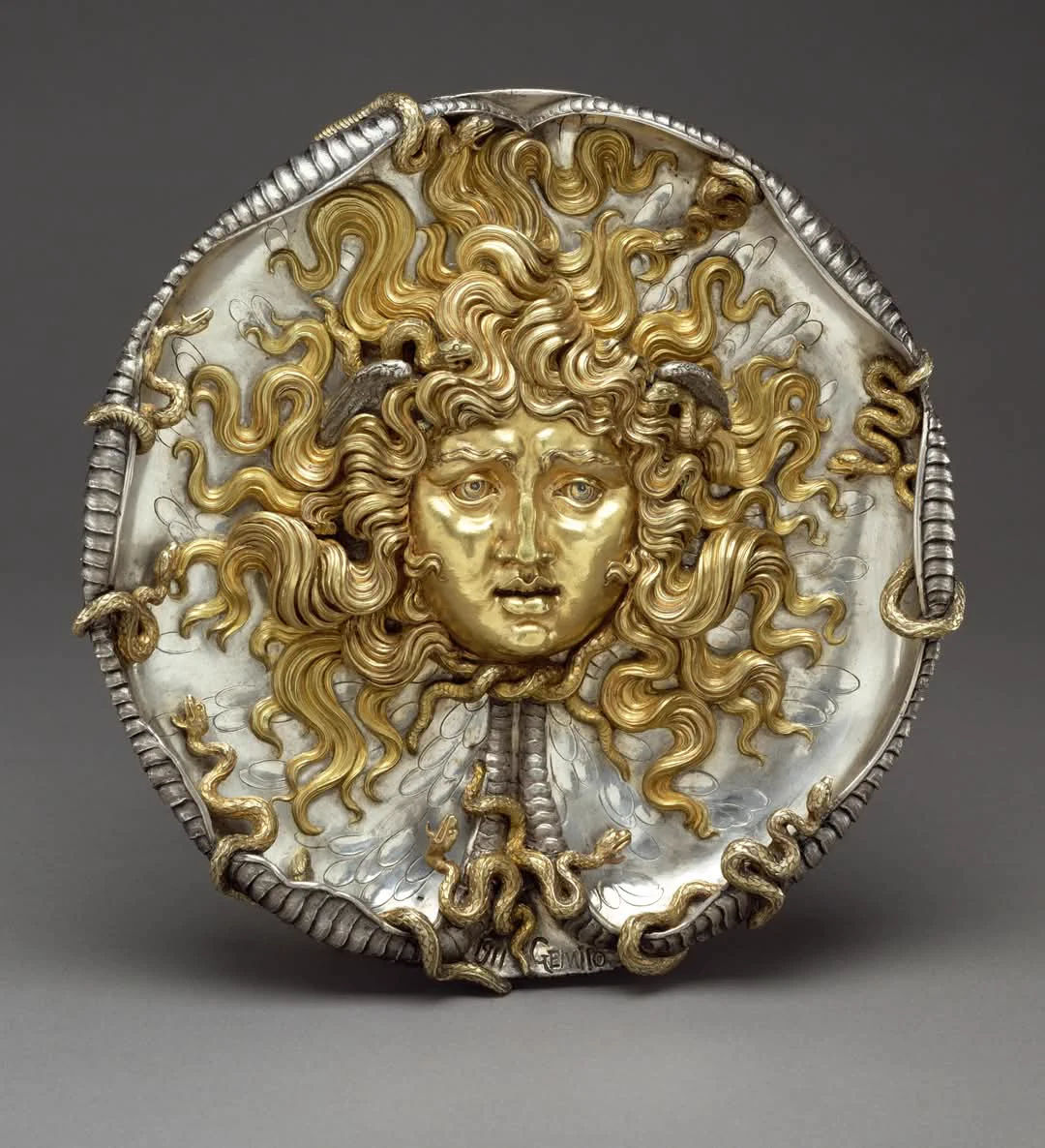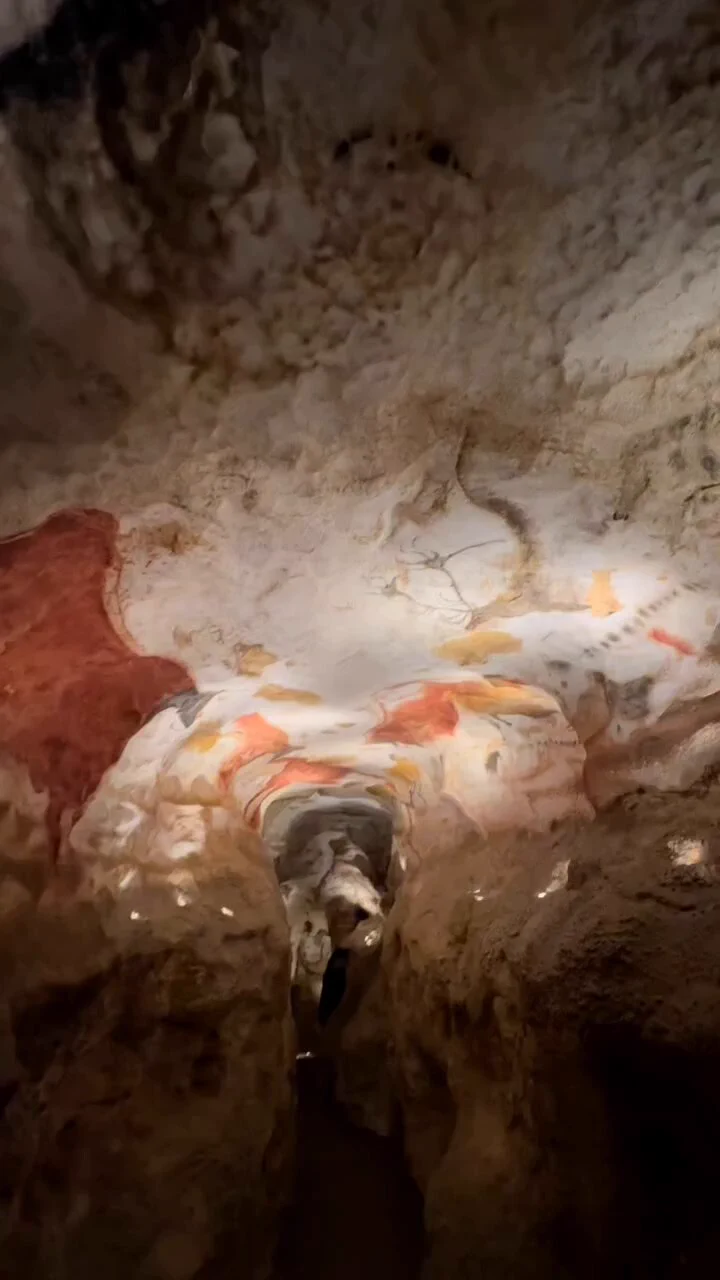
Archaeo - Histories
@archeohistories
History is an unending dialogue between present and the past, that's why few pages of history give more insight than all the metaphysical volumes. (24)
The artwork, and specifically the sculptures of ancient Greece were some of most profound, artistic statements of the human form ever to emerge from society. The dedication to detail, intricacy and exemplifying the beauty of the human body was unmatched at this time. However, like all art, it was a process of slow and deliberate evolution that created the beautiful depictions of the human body that we have all come to love, and the evolution of the man in the marble is just as intriguing as the finished product.Not much is really known about this period of Greek art, as there is no writing found from this period to describe the artwork. The sculptures created were often very small objects like chariots and horses. Many of the pieces were placed in tombs and not intended for public display. It is possible that larger sculptures made at this time were constructed from perishable materials, like wood. This period was believed to have lasted from about 900-700 BC.The archaic period was believed to have lasted from about 700- 480 BC. This era saw the first depictions of the human form. These sculptures were not the beautiful, idealized depictions that would be produced later, but instead the bodies were usually stiff and rigid. The principle sculptures at this time were given the generic term of kouros, a simplified, nude sculpture of a male youth, and kore, which was a depiction of a female youth who was normally clothed. These statues were simplified, forward facing and lacked extensive detail. They were believed to have been influenced by the cultures of Egypt and south west Asia. The kouros and kore would often be depicted smiling, which was uncommon for later sculptures. These ancient greek statues would lay the ground work for later masterpieces of Greece.The classical period is thought to have begun with the sculpture known as “The Kritios Boy” in about 480 BC. This sculpture was one of the first to depict the human form in a very realistic way. The body was sculpted to reflect accurate human proportions. The marble appears as if there are defined muscles covered by taut skin, while the sculpture itself appears to be displacing its weight on one hip. This is known as a contrapposto stance and it represented a significant innovation in the representation of human beings. While the Kritios boy is regarded as the start of the Greek classical period, it in no way encompasses the entire period.The classical period saw the rise of brilliant artists like Polyclitus, Lysippos, Scopas,and Praxiteles. They all contributed to the innovation and realism that would come to constitute the Greek classical period. It is during this time that we see an obsessive eye for detail and, at times, an exaggeration of the human body. Many idealized statues can be seen with muscle definition and limb proportions that are unattainable by a human being. Many of the portrayals are god-like creations that would have been larger than life when compared to the average citizen of ancient Greece.#archaeohistories#

Medusa by Vincenzo Gemito (Italian, 1852-1929) :The severed head of Medusa stares out from convex face of a two-sided relief. Its psychological realism, simultaneously beautiful and hideous, reveals the conflicting yet symbiotic emotions of attraction and repulsion. This combination expresses the power of ancient Greek apotropaic objects, charms that warded off evil. Since the sight of Medusa's face transformed by the goddess Athena into a monster with snakes for hair had turned men into stone, it became a traditional apotropaic symbol. Athena affixed the actual Medusa's monstrous head to her shield, and human warriors followed suit.The sculptor Vincenzo Gemito derived his composition from the famous antique cameo, the Tazza Farnese, but transformed it into an entirely new kind of sculptural object. He revived Renaissance techniques of lost-wax casting to make the relief. Although he concentrated on the face of the two-sided, glistening metallic relief, he textured the back with snakeskin.The Getty Villa Museum #archaeohistories#

The entrance to the Great Pyramid of Giza, also known as the Pyramid of Khufu or Cheops, is one of the most iconic features of this ancient structure...The Great Pyramid of Giza stands as a testament to the architectural brilliance and engineering skills of ancient Egypt. Constructed during the reign of Pharaoh Khufu around 2560 BC, this magnificent structure is the largest of the three pyramids on the Giza Plateau and one of the Seven Wonders of the Ancient World. Rising to an original height of nearly 147m, its construction involved the labor of thousands of workers over a span of about 20 years. Composed of an estimated 2.3 million blocks of limestone and granite, its precise alignment and complex internal passageways have intrigued historians and archaeologists for centuries. The Great Pyramid continues to captivate the imagination of people around the world, symbolizing the rich history and enduring legacy of ancient Egyptian civilization.The original entrance was located on the northern face of the pyramid, approximately 17m above the base. This entrance was designed as a narrow passage leading into the internal corridors and chambers of the pyramid. It is believed to have been carefully sealed after the pyramid's completion to protect the burial chamber and its treasures.In modern times, visitors do not use the original entrance. Instead, they access the pyramid through what is known as the Robbers' Tunnel, an alternate passageway created around 9th Century AD, during an attempt to uncover its secrets. This tunnel bypasses much of the original design and provides entry to the Grand Gallery and the King's Chamber.The original entrance and its placement were part of the precise architectural planning that has amazed historians and archaeologists for centuries. The Great Pyramid's design, including its intricate internal passages, remains a subject of wonder, symbolizing the incredible ingenuity of ancient Egyptian engineering.#archaeohistories#

Lascaux Cave - the Sistine Chapel of the Paleolithic Period :Lascaux Cave is a Palaeolithic cave situated in southwestern France, near village of Montignac in Dordogne region, which houses some of most famous examples of prehistoric cave paintings...Close to 600 paintings – mostly of animals - dot the interior walls of the cave in impressive compositions. Horses are the most numerous, but deer, aurochs, ibex, bison, and even some felines can also be found. Besides these paintings, which represent most of the major images, there are also around 1400 engravings of a similar order.The art, dated to 17000-15000 BC, falls within the Upper Palaeolithic period and was created by the clearly skilled hands of humans living in the area at that time. The region seems to be a hotspot; many beautifully decorated caves have been discovered there. Exact meaning of the paintings at Lascaux or any of the other sites is still subject to discussion, but the prevailing view attaches a ritualistic or even spiritual component to them, hinting at the sophistication of their creators. Lascaux was added to the UNESCO World Heritage Sites list in 1979, along with other prehistoric sites in its proximity.Art at Lascaux was both painted on and engraved into the uneven walls of the cave, artists working with edges and curves of the walls to enhance their compositions. Resulting impressive displays depict mainly animals, but also a significant amount of abstract symbols, and even a human. Of the animals, horses dominate the imagery, followed by deer and aurochs, and then ibex and bison. A few carnivores, such as lions and bears, are also present. The archaeological record of the area shows that the depicted animals reflect the fauna that was known to these Palaeolithic humans.The entrance of the cave leads away from the daylight and straight into the main chamber of the cave, the Hall of the Bulls. Aptly named, this space contains mostly aurochs, a now-extinct type of large cattle. In a round dance, four large bulls tower above fleeing horses and deer, the relief of the walls serving to emphasise certain parts of the paintings. The animals are shown in side-view, but with their horns turned, giving the paintings a liveliness indicative of great skill. So far, these animals are easily identifiable, but others are less clear-cut. Seemingly pregnant horse with what looks like one horn on its head. Another mysterious figure is depicted with panther skin, a deer's tail, a bison's hump, two horns and a male member. Creative minds have suggested it may be a sorcerer or wizard, but what it really represents is hard to determine.Beyond the Hall of the Bulls lies Axial Gallery, a dead-end passage, but a spectacular one at that. It has been dubbed the 'Sistine Chapel of Prehistory,' as its ceiling is home to several eye-catching compositions. Red aurochs stand with their heads forming a circle, while the main figures of Gallery stand opposite one another: a mighty black bull on one side, a female aurochs on the other, seemingly jumping onto some sort of lattice that has been drawn underneath her hooves. There are horses in many shapes, including one known as 'Chinese horse,' with its hooves depicted slightly to the back, demonstrating a use of perspective far ahead of its time. Towards the back of the passage, a horse gallops with its mane blowing in the wind while its companion falls over with legs in the air.Original cave was closed to public in 1963 CE, after it became clear that many visitors caused, among others, growth of algae on cave walls, dealing irreparable damage to the paintings. Despite closure, fungi have spread within cave, and efforts to control these issues and protect art are ongoing. Those looking for an alternative experience can visit Lascaux II, a replica of Great Hall of Bulls and Painted Gallery sections, which was opened in 1983 CE and is located a mere 200m from original cave.🎥 : Credit to the Owner#archaeohistories#

Although music existed in prehistoric Egypt, the evidence for it becomes secure only in the historical (or "dynastic" or "pharaonic") period after 3100 BC. Music formed an important part of Egyptian life, and musicians occupied a variety of positions in Egyptian society. Music found its way into many contexts in Egypt: temples, palaces, workshops, farms, battlefields and the tomb. Music was an integral part of religious worship in ancient Egypt, so it is not surprising that there were gods specifically associated with music, such as Hathor and Bes (both were also associated with dance, fertility and childbirth).All the major categories of musical instruments (percussion, wind, stringed) were represented in pharaonic Egypt. Percussion instruments included hand-held drums, rattles, castanets, bells, and the sistrum, a highly important rattle used in religious worship. Hand clapping too was used as a rhythmic accompaniment. Wind instruments included flutes (double and single, with reeds and without) and trumpets. Stringed instruments included harps, lyres, and lutes-plucked rather than bowed. Instruments were frequently inscribed with the name of the owner and decorated with representations of the goddess (Hathor) or god (Bes) of music. Both male and female voices were also frequently used in Egyptian music.Professional musicians existed on a number of social levels in ancient Egypt. Perhaps the highest status belonged to temple musicians; the office of "musician" (shemayet) to a particular god or goddess was a position of high status frequently held by women. Musicians connected with royal household were held in high esteem, as were certain gifted singers and harp players. Somewhat lower on the social scale were musicians who acted as entertainers for parties and festivals, frequently accompanied by dancers. Informal singing is suggested by scenes of workers in action; captions to many of these pictures have been interpreted as words of songs. Otherwise there is little evidence for the amateur musician in pharaonic Egypt, and it is unlikely that musical achievement was seen as a desirable goal for individuals who were not professionals.Ancient Egyptians have long valued music much in their daily life. Performing musicians and vocalists are frequently seen alongside the tunes they played or sang along to in wall reliefs and paintings found in temples and tombs. In addition to musical instruments, a wide range of items decorated with images of musical sceneries have persisted to this day. There are many statues and statuettes of musicians, and the abundance of textual material enables us to determine the performers’ names, the names of their instruments, their repertoires, and the playing styles they employed. The singer Kahay, who was praised for his lovely voice, was one of the artists whose names were also well-known.The harp was not only the most popular musical instrument in ancient Egypt, but it was also shown as one of the sacrifices made to the gods during rituals and processions. Texts indicate that it was decorated with priceless materials. An ebony, gold, and silver harp belonged to King Ahmose. A step farther was taken by Thutmose III, who ordered “a superb harp made with silver, gold, lapis lazuli, malachite, and every splendid precious stone.”Perhaps the easiest method to create music is to sing, clap your hands, or snap your fingers. However, a range of musical instruments, including idiophones and membraphones, as well as wind and stringed instruments, were already in use throughout the ancient Egypt. All of instruments used in ancient Egypt are being used today. There were wind instruments such the shepherd’s pipe, double-pipe, clarinet, flute, oboe, and trumpet, as well as percussion instruments including drums, the sistrum, rattles, tambourines, and later, bells and cymbals. Similar to today, musicians performed them individually or in an ensemble.🎥© TikTok#archaeohistories#

Woman's Path Through History Over 10,000 Years Ago - a woman or young man carried a toddler across a muddy terrain in present-day White Sands National Park, New Mexico...These ancient footprints offer scientists a remarkable glimpse into the past. This revelation is courtesy of the National Park Service and Bournemouth University.The prehistoric traveler embarked on a journey carrying a child, returning alone hours later.In an arduous trek more than 10,000 years ago, a woman or a young man with a toddler balanced on one hip trudged northward through what is now White Sands National Park in New Mexico. Facing potential rain and slippery mud, the traveler briefly set the child down before continuing. Along the way, a woolly mammoth and giant sloth crossed their path. Hours later, the traveler retraced their steps south, now without the child.Scientists have documented nearly a mile of these fossilized footprints—the longest human trackway of its age ever found. “I’ve never seen anything quite like it,” says evolutionary biologist Kevin Hatala from Chatham University, who was not involved in the study.This trackway, featuring over 400 human prints including tiny child prints, is detailed in a new study published in Quaternary Science Reviews. By examining the footprints' shape, structure, and distribution, researchers revealed an intimate portrait of this ancient journey, capturing even the traveler’s toes slipping on the wet surface.Meticulous Excavation of Footprints Scientists carefully unearthed these delicate footprints, documenting them in three dimensions before they could deteriorate. The tracks also revealed a mammoth and a giant sloth traversing the area after the humans passed. While the mammoth appeared indifferent to the human presence, the sloth likely sensed it, rearing up as modern bears do to detect scents.“This gives us insight into humans within their ancient ecosystem,” explains study author Sally Reynolds, a paleontologist at Bournemouth University, noting the sloth’s awareness of nearby humans—an insight not gleanable from bones alone.The 'Ghost Tracks' Fossil footprints provide stunning snapshots of ancient behaviors, preserving moments in time unlike any other remains. “Footprints sites are special because they capture a moment in time,” says paleoanthropologist William Harcourt-Smith from the City University of New York.This track site, part of an ongoing documentation project at White Sands National Park, owes its discovery to David Bustos, the park’s resource program manager. These shallow impressions, visible only through slight moisture-induced color changes, became known as “ghost tracks.”In 2016, Bustos consulted various specialists about the tracks, including Matthew Bennett from Bournemouth University, who led the new study. Since then, Bennett and his colleagues have made multiple trips to document the array of human and animal prints throughout the park.The newly studied prints are set in fine sand, held together by a thin salt crust. The team excavated 140 tracks using brushes, and recorded each print with 3D photogrammetry before they could erode.By analyzing the footprints' shape, size, and distribution, researchers pieced together the ancient journey. The primary traveler was likely a woman or young man, based on footprint length comparisons with modern humans. Small child prints join the main trackway in several places, indicating a child under three years old accompanied the traveler.Traveler's pace was brisk, about 3.8 miles per hour, despite muddy conditions and carrying a child. In some spots, unusually long strides suggest stepping over obstacles like puddles or mammoth dung. The child was carried northward, evidenced by larger left foot tracks from bearing extra weight. Upon return, traveler’s footprints show no size discrepancy, and fewer signs of slipping, indicating they were now unencumbered.© The Archaeologist#archaeohistories#




















